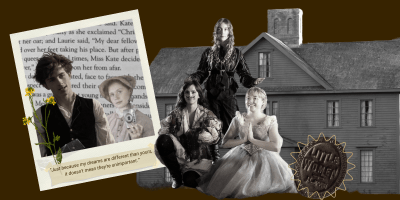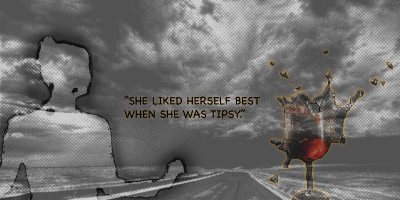
“Քովէս քալէ ըսի, աշխարհքէն մի՛ վախնար, տղաս։”
“Walk by me I said, do not be scared of the world, son.”
This is one of the beautifully memorable quotes said by legendary actor Frunzik (Mher Mkrtchyan), playing a dutiful uncle who beckoned his suddenly orphaned nephew to stay close to him and clueless little Torik (played by Ashot Adamian) listened obediently. This line subtly foreshadows how Torik would soon stand bravely against the same world he feared for his happiness.
Such moments define the well-known movie that is “A Piece of Sky,” (Կտոր մը Երկինք) the melodrama film directed by Henrik Malyan in Soviet Armenia (1980). The film revolves around an orphaned boy who comes under the care of his uncle and aunt, Grigor Agha (played by Mher Mkrtchyan) and Turvanta (played by Sofiko Chiaureli). Torik is a sweet but naive boy under his uncle’s caring but harsh thumb; Grigor swears to make a man out of his nephew, while Turvanta is softer. After his uncle dies, Torik takes care of his dear aunt but is quite lonely as an adult outcast by society as a shy saddle-maker for donkeys, until he falls madly in love with another outcast, Angel. She is exactly how her name sounds, but meets Torik when he visits the brothel where she moved in. Nonetheless, they fall in love and want to get married, fueling the anger of the unforgiving society even more. In an unforgettable ending, Torik rides a carriage all across town with his wife and aunt, proudly declaring his happiness, not being scared of the world anymore.
The first and most important aspect that made this movie a challenge to the Armenian film industry is its stance against the traditionalism that Armenia is known for. It is not a common thing to marry a girl from a brothel, such a thing would be talked about in the community for ages. However, the movie shows the other side of the coin; Angel is actually a good-hearted girl who loves Torik dearly, she sees him as a wonderful man and respects his aunt, who adores her even though her initial response was a horrified shock. Torik sees through her exterior and loves her for her true self.
The movie humanizes women like Angel, who are most of the time brought to be in brothels because life has forced them to go in that direction. For the viewer, Torik represents the movie itself, a boy who bravely stands against a ruthless society that has shunned him for so long, and is loved truly by the perfect woman for him. Similarly, the movie stood against Soviet Armenian ideals and overall traditionalism and is now one of the most loved movies by youths and adults.
The second element that makes “A Piece of Sky” nostalgic and special is its simplicity of filmmaking. The vintage feel through the eyes of a young adult makes me wish that current Armenian films evoked this feeling and strengthened the unique Armenian aesthetic that current films lack so much. The aesthetic revolves around the calm, nostalgic, and natural aura that Armenian culture is rich with; anyone who has been to Gyumri or even to the vintage spots in Yerevan would understand that an essential element is missing in current Armenian films–something that is Armenian by name but not by aesthetic. The fact that the movie was filmed in Gyumri is another factor of the special nostalgia that the city’s streets and buildings convey. Gyumri presents the very heart of Armenia’s beauty as a simple yet artistic culture, and the movie made me feel exactly the same way, I would tell others to watch the movie if they want to visualize the sense of Gyumri.
Additionally, all of this would not be complete without the legendary soundtrack of Tigran Mansuryan. Even though the same melody is played over and over again, it is adapted into each scene as the movie goes on. It starts off slow with a solemn flute to connote the sudden sadness, slowly lilting to show Torik’s growth and slowing down again when he is terribly upset. The melody weaves through with soft and full piano notes during certain scenes with Angel and eventually becomes speedy and sonorous with multiple instruments to show that his life is now complete, everything is in place, and society can just look on.
Finally, the last element and only element that I would criticize is how certain scenes are extended too much when there could have been different parts of the story. For instance, Torik’s adult life is the main focus of the movie, when there are more important aspects like his marriage to Angel. I would have loved to see more scenes with them together, living their new lives and overall the aftermath.
However, I am sure that the director most likely had something special in mind. The extended scenes symbolize Torik’s seemingly endless loneliness and dissatisfaction, as he and his aunt could not find a bride that wanted him, as nearly all girls thought poorly of an introverted saddle-maker. The sad melody of Mansuryan emphasizes that and is plated plenty in the scenes to provide a feeling of hopelessness and boredom that Torik felt. If that is the case, it does add to the natural aesthetic of the film, but it could have been done in an alternative way. Then again, it speaks volumes about the talent if even an unnecessary element seems very natural.
“A Piece of Sky” is a film that is making its comeback as an epitome of vintage and authentic Armenian art. Many older adults I know adore the movie, and even some young adults such as myself are diving into the past of Armenian films and music. It is great to see this expand in our community, and I hope that today’s filmmakers rewatch “A Piece of Sky” and take notes for how to tell a simple, compelling story about ordinary Armenian people.









